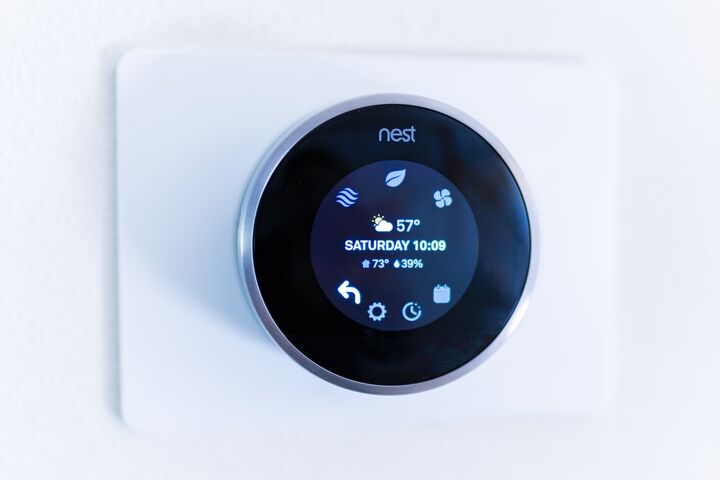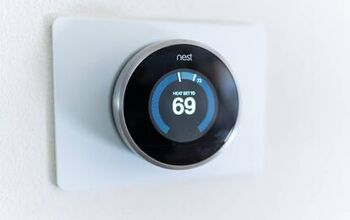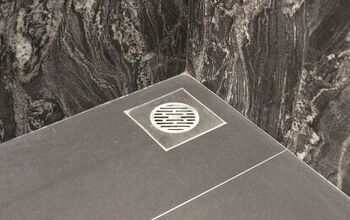Why Does Nest Say Delayed? (Here's Why & How to Fix)

Nest thermostats display several different messages that alert us of an issue with the device. One such message is that Nest is “delayed.” When something is delayed, we think of it as working intermittently. It’s often not as fast as we want it to be, which can be frustrating.
Nest gives a “Delayed” message when the thermostat is underpowered. If the rechargeable Lithium-Ion battery receives an insufficient amount of power, Nest cannot function properly. Additionally, the HVAC system may become erratic. Adding a C wire ensures Nest will receive sufficient power. This should eliminate the “Delayed” message altogether.
Do You Need Your Thermostat Repaired or Reprogrammed?
Get free, zero-commitment quotes from pro contractors near you.

How Nest Receives Power
Contrary to popular belief, Nest thermostats need electricity to function. In fact, they need a constant 24VAC power supply to maintain a strong Wi-Fi connection.
When you install a Nest thermostat, you’ll connect to it several wires that also go into your HVAC control board. The R wire (which is usually red) provides 24VAC to the entire HVAC system. A portion of this power goes to your Nest thermostat.
C Wire
Most modern smart thermostats require a C wire, or Common wire, for their 24/7 power source. Google assures Nest users that a C wire is unnecessary, which is partially true.
Without a C wire, Nest splits its power supply with the HVAC system. The Lithium-Ion battery charges only when the HVAC system is powered on. So, the thermostat receives some power, albeit intermittently. And many users have discovered that adding a C wire resolves a host of issues with their Nest.
Why the “Delayed” Message?
One of the problems with installing a Nest without a C wire is an underpowered battery. Not only does Nest draw power when it’s heating and cooling, but it also needs power for its Wi-Fi connection, motion sensor, and LED display. All of these functions might draw more power than the Nest is being given.
When this is the case, Nest displays a “Delayed” message to let users know the device isn’t functioning properly.
How This Affects Your HVAC System
So, Nest is taking all this power for its various smart functions. Cool. But remember the R wire? It’s actually designed to power the HVAC system.
Yes, it’s also meant to supply a small amount of power to the thermostat. But traditional thermostats don’t require as much power as a Nest (or other smart thermostats).
Your HVAC system, on the other hand, needs power for the furnace, air conditioner, heat pumps (if you have them), and fans. If more power is being drained than being drawn, this poses a big problem.
Not only will your Nest be affected, but your HVAC system will, too. The system may become erratic, turning on and off randomly, blowing hot instead of cold—or vice versa—or displaying incorrect temperatures.
Over time, any and all of these issues can cause serious damage to the HVAC. Let’s not forget the damage they’ll do to your wallet when you have to get them fixed!
Fixing the “Delayed” Message
The simplest and most obvious fix to get rid of a “Delayed” message is to install a C wire. A C wire gives constant power to the thermostat, solving the underpowered issue that causes the “Delayed” message.
Deriving its power supply from the main power supply, a C wire installation reduces the load on the HVAC system. It’s the happy solution for both your HVAC system and your Nest!
I Already Have a C Wire!
Usually, though not always, the wire bundle going to your thermostat includes a C wire. It’s possible you have an unused one pushed to the back of the junction box. Here’s how to check.
- Shut the power off to the HVAC unit from the breaker.
- Check the HVAC control board for a wire installed in the C terminal. If you have one, it will also appear on the other end where your thermostat is mounted.
- Remove your Nest display and base plate from the wall. Keep the current wires attached.
- Pull the base plate and wires further out to reveal the wire bundle. You should notice an extra wire that isn’t attached to anything. It may be blue or black. This is the C wire.
- If the wire is capped, remove the cap and check for signs of corrosion. Otherwise, strip the casing to reveal the copper. Note: if there are any signs of corrosion, the wire must be replaced.
- Locate the C terminal on the Nest base plate and input the C wire. Press the tab down firmly.
- Reattach the base plate to the wall.
- Restore power to the HVAC system at the breaker.
- Reattach the Nest display to the wall and wait for the thermostat to fully power up.
I Don’t Have a C Wire
If you don’t have a C wire, you still have a few options.
- Manually charge your Nest via the USB port on the back.
- Plug your Nest into a wall outlet so it constantly receives power.
- Install a C wire.
- Get a different smart outlet, such as an Ecobee. This works without a C wire when you get a Power Extender Kit.
Your Nest comes with a USB cable and plug which can be used to manually charge the device. Remove the Nest display from the wall and locate the USB port on the back. Depending on the model of your Nest, you’ll either have a micro or mini USB port.
Plug the Nest into a wall outlet to charge. Google does not recommend charging it via a computer. It can take anywhere from several minutes to 2 hours to fully charge depending on the battery’s level. Once it’s charged, replace the Nest display back on the wall.
This method isn’t without its flaws. For one thing, the “Delayed” message will continue to appear as the battery drains. So, you’ll have to keep taking it off the wall to charge it until…forever. It’s not a permanent fix by any means. Additionally, while your Nest is charging this way, your HVAC system is rendered useless.
Using a Wall OutletPerhaps the simplest way to give your Nest constant power is to just plug it in! You can use the included plug and USB cord to plug your Nest in a wall outlet the same way you would a lamp.
While the Nest will always receive power in this manner, it’s not the best-looking solution. You also have to ensure the thermostat is mounted somewhere close to an outlet.
Installing a C WireIf you can’t stand the thought of looking at an external power cord every time you walk by your Nest, install a C wire. This is the only other way to ensure your Nest gets a constant, sufficient power supply.
It’s probably best to let the professionals do this if you’re at all unsure. But if you’re game, you can check out these steps to install a new C wire.
Related Questions
Below are some additional questions users had about Nest’s battery life and the messages they receive from their devices.
Why does Nest say “In 2 Hours?”When Nest displays the message “In 2 Hours,” it means the temperature is delayed from cooling for 2 hours. This message often appears when the temperature is set at one level and you adjust it. For example, if your home is set to 70 degrees, Nest is telling you it will take 2+ hours to cool your home to 68 degrees.
How long does a Nest battery last?With a constant stream of power, a Nest battery can last between 5 and 10 years without seeing any issues. This would involve installing a C wire or plugging the Nest into a wall outlet. If the battery is strained, which is often the case when powered only by the R wire, it’s reported to fail after 2 years.
How long does Nest last without power?If you experience a power outage, Nest relies on its rechargeable battery to stay powered. The length of time Nest will last without power depends on how much battery life it has at the time of the outage. If the Nest was fully charged, it can last up to 10 hours without power. It also employs an energy-saving feature that powers itself down when it recognizes a low battery.
What happens to Nest if the Wi-Fi goes out?If you lose Wi-Fi connection or experience a server outage, Nest still functions as a traditional thermostat. You continue to have manual control of your HVAC system. Without Wi-Fi, you lose Nest’s smart device capabilities. However, once the server is back online, Nest remembers your programs and settings.
Do You Need Your Thermostat Repaired or Reprogrammed?
Get free, zero-commitment quotes from pro contractors near you.

Conclusion
If you receive a “Delayed” message on your Nest, it means the battery isn’t receiving sufficient power. Not only does this delay the functions of your Nest, but it also can be harmful to your HVAC system.
To solve this issue, install a C wire or plug your Nest into a wall outlet to give the thermostat a constant stream of power. You can also manually charge your Nest, though this is only a temporary fix.

Brigid Levi is a wife, mother, and freelance writer who enjoys a good DIY project and creating beautiful spaces within her home. From cleaning and organization hacks to home decor ideas, she loves helping people in their quest to turn a house into a home. Her hobbies include pretending to be Joanna Gaines while updating her home with her husband and performing in local theater productions.
More by Brigid Levi



























